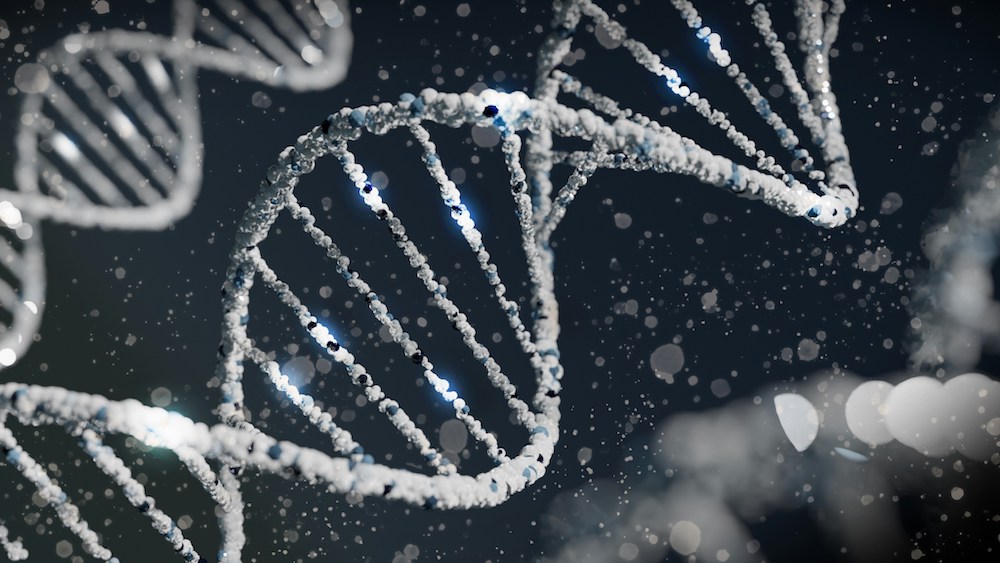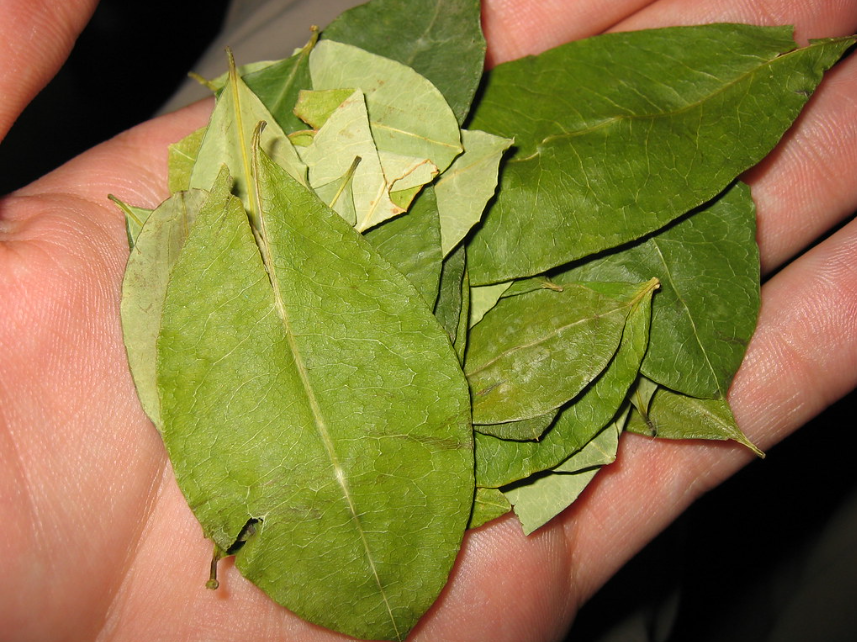DNA collected from Incan ritual human sacrifices reveals traces of stimulants and hallucinogenic drugs.
Specialists analyzed hair and fingernail samples from two nearly 500-year-old individuals found on the Ampato Volcano in Peru, only to find that they contained traces of cocaine and hallucinogens.
by Hailey Farrar, Anthropology
This article is a popular media article briefly covering the research completed in the article written by Socha et al. (2022) into the ritual use of South American drugs such as coca leaves, which are used in the production of cocaine, and Ayahuasca, a psychoactive plant brew that produces hallucinogenic effects, in human sacrifices completed in Inca society. The researchers were able to find trace amounts of these drugs in the DNA of two young Inca children by taking samples from the hair and fingernails of their partially skeletonized remains. The children were found to have been ritually sacrificed on a peak of the Ampato volcano in Peru in an Incan ritual known as Capacocha, likely in honor of highly important Inca deities. The ritual was likely performed by Inca priest-figures in order to keep peace with the deities, stay within their good graces, and avoid their environmental wrath. This article explains the probable roles of these drugs in Inca society outside of just ritual use, as well as the sacrificial rituals and the possible reasons behind them. The article concludes with the ways that this research and the information deduced from it can be useful to us today in learning about and from past societies like the Inca.
Inca, ritual, drug use, human sacrifice
About 500 years ago, after chewing euphoria-inducing leaves, a pair of Inca children were led up the high peaks of the Ampato Volcano in Peru to undergo the Capacocha ritual. These children were chosen to be sacrificed in honor of the most important Inca deities, such as Pachamamac and Illapa, in hopes that it may appease the deities enough to ensure no natural disasters or bad luck would be sent to the Inca peoples. Five centuries later, as detailed in the research article by Socha, Sykutera, Reinhard, and Perea, these same children were discovered by Johan Reinhard and José Antonio Chávez during a 1995 expedition on the Ampato Volcano, where they collected hair and fingernail samples from the remains of the bodies of these Inca children. Once these samples were analyzed, they were revealed to contain traces of cocaine and harmine (a hallucinogenic alkaloid). These children and the samples collected from them may help us to better understand the Inca people and their use of stimulants and hallucinogenic drugs during both divination and rituals as well as in their everyday lives.
The two individuals analyzed in this study were both children around the age of 6 to 7 years old at death. One was a young girl, and the other a young boy. They were buried with extensive grave goods including textiles and ceramic vessels, along with other items that could indicate each individual’s gender such as gold male or gold female figurines and weaving tools (Socha et al. 2022). The remains of the young girl were partially mummified, allowing for the collection of her hair for DNA analysis. The burial site of the young boy had been struck by lightning, which partially skeletonized his remains and burned his soft tissue and hair. In lieu of those elements, his fingernails were able to be recovered for study. The DNA analysis revealed that both individuals had been chewing on coca leaves and were intoxicated by a beverage called Ayahuasca in the last moments of their lives (Socha et al. 2022).
Figure 1. Coca leaves, such as the ones chewed by the Inca people to produce stimulating effects. Source: “Coca leaves” by Ryan Greenberg is licensed under CC BY-ND 2.0.
The drugs found in the DNA results are known to be naturally occurring in various plants in South America. One popular plant in the Andean region was the coca plant (Erythroxylum coca), whose leaves were often chewed on for many varied reasons cross-culturally, including for medicine, for offerings to the gods, and for establishing social status and hierarchy within a society (Socha et al. 2022). Coca leaves were also used in Inca culture in several different ways. For example, bags of coca leaves were given as gifts during festivals to the caciques (or native chiefs) and used as payment. Additionally, coca leaves were often related to rites of passage as well as utilized in funerals where they were sometimes placed in the mouths of the deceased (Socha et al. 2022). Coca, when ingested, has anesthetic properties and creates a sense of euphoria, which may have been helpful in calming individuals before they were sacrificed (Socha et al. 2022).
The second drug, Ayahuasca (Banisteriopsis caapi), is a form of hallucinogenic herb that can be ingested through a snuffing mixture or a brewed drink. Ayahuasca is said to cause a hallucinogenic or possibly even trance-like state that is sometimes described as a “near death experience” (Socha et al. 2022). It became popular due to its vision-inducing effects as well as its antidepressant stimulation. Ayahuasca is theorized to have been used in hopes of communication between the users and the spiritual world (Socha et al. 2022). It may have also been exploited for its antidepressant properties to calm the moods of the people who were chosen as sacrifices for the Capacocha ritual.
The Capacocha ritual was a ceremony that the official state representatives would perform in which they would sacrifice young women and children who were supposed to be beautiful and unblemished. Sometimes individuals were chosen who had unique features or birth defects (Socha et al. 2022). This ritual was important to Inca peoples for appeasing their gods and ensuring the local people were protected from calamity and disaster. One said deity was called Pachamamac, or “Maker of the World,” who the Inca people said healed their injuries and infirmities (MacCormack 2006). Another deity, Illapa, was a mountain god associated with lightning and other related events (Ade 1983). A lightning strike death was seen as a punishment straight from the god, which is interesting looking back at the young boy on the Ampato Volcano, who had been partially skeletonized by a lightning strike. It was likely important to the Inca people to stay in the good graces of deities such as these, who had so much sway over their lives, which the Inca people did by offering them sacrifices. The individuals sacrificed in the Capacocha ritual would later become intermediaries between the world of people and the deities. In addition, the ritual was often used to create or maintain the local religious hierarchies within the communities (Socha et al. 2022).
Typically, in the Capacocha ritual, the individuals chosen as sacrifices were given stimulants and hallucinogens that calmed them down, most likely as a form of spiritual conditioning or as a way to make them more suitable for communion with their gods (Socha et al. 2022). Additionally, in situations in which other Capacocha sacrifice victims have been analyzed, it has been found that they likely chewed coca leaves for weeks before their actual death (Socha et al. 2022). However, it is unclear if this is the case for these individuals found on the Ampato Volcano, or if they were only given the coca leaves right before being sacrificed. Though, since the coca leaves were used for many distinct reasons in Inca society including medicine, social hierarchy, and offerings to the gods, it is likely that the individuals chosen to be sacrifices were not strangers to the stimulants themselves or the effects they created. Rather, the use of these substances was likely a widespread practice among the community for varied reasons and not solely for ritual sacrifice (Socha et al. 2022).
The understanding of the rituals that took place in Inca culture, as well as the components utilized both within them and in adjacent events, can allow us to get a glimpse into the lives of Inca people as well as possibly other societies that may have lived in the same area in and around the same time period. Specifically, with the study of the use of such plants as the coca leaves and Ayahuasca in Inca culture, we can infer new possibilities about the spiritual or even everyday practices that took place in their lives. The more we know about the components of life that were important to a culture such as this one, the more we can learn from and about them.
References
Ade, D. W. G. (1983). Lightning in the folklife and religion of the central Andes. Anthropos, 78. 770-778.
MacCormack, S. (2006). Gods, demons, and idols in the Andes. Journal of the History of Ideas, 67(4). 623-648.
Socha, D. M., Sykutera, M., Reinhard, J., & Perea, R. C. (2022). Ritual drug use during Inca human sacrifices on Ampato mountain (Peru): Results of a toxicological analysis. Journal of Archaeological Science: Reports, 43. 103415.
Citation Style: AJPA (American Journal of Physical Anthropology)

